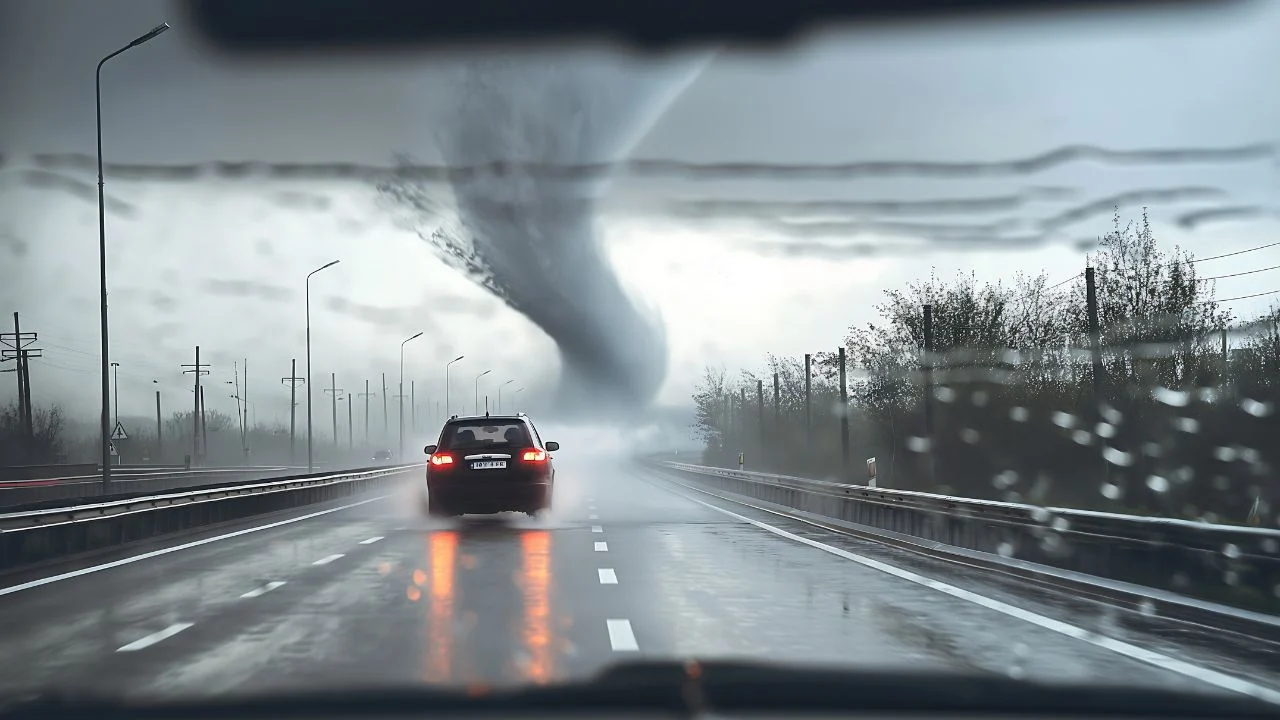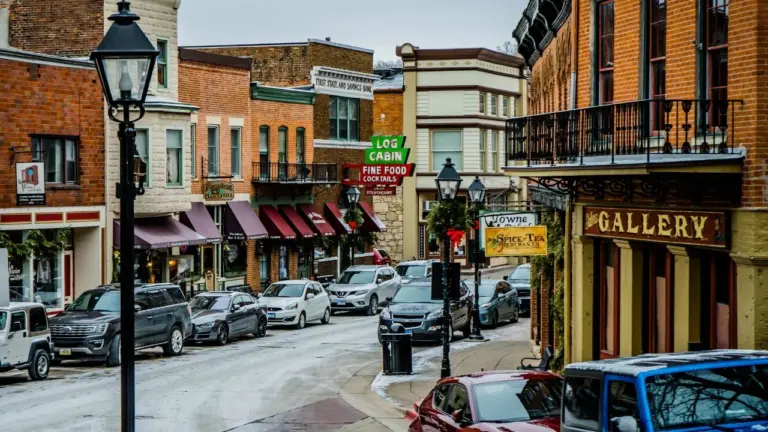21 of the Most Catastrophic Tornadoes in U.S. History, Including Oklahoma’s Deadliest
Tornadoes are among nature’s most destructive forces, capable of leveling entire communities in minutes. The United States, particularly areas like Tornado Alley and Dixie Alley, sees more tornadoes than any other country, with an average of 1,200 annually, according to NOAA. From the deadliest single tornado to the costliest outbreaks, these storms have left lasting scars on the nation’s landscape and history. Below, we explore 21 of the most catastrophic tornadoes in U.S. history, including Oklahoma’s deadliest, based on death tolls, injuries, and economic damage. Data is sourced from NOAA, the National Weather Service, and other reliable records, with damages adjusted for inflation to 2025 dollars where applicable.
1. Tri-State Tornado (March 18, 1925)

The deadliest tornado in U.S. history tore through Missouri, Illinois, and Indiana, killing 695 people and injuring over 2,000. Rated an F5 on the Fujita Scale, it carved a 219-mile path—potentially longer, as modern research suggests at least 174 miles of continuous destruction. With winds exceeding 300 mph, it obliterated entire towns, including Murphysboro, Illinois, where 234 died, the highest single-town toll. Over 15,000 homes were destroyed, with damages estimated at $1.46 billion (2011 dollars). The lack of warnings in 1925 amplified its devastation.
2. Natchez Tornado (May 6, 1840)

The second-deadliest U.S. tornado struck Natchez, Mississippi, killing 317 and injuring 109. Traveling along the Mississippi River, it sank flatboats and killed many shipping crews, with winds estimated at 200 mph. The actual death toll may be higher, as records from the time often underreported deaths, especially among African Americans. This F4 tornado caused significant structural damage, including to the supposedly “tornado-proof” Eads Bridge.
3. Great St. Louis Tornado (May 27, 1896)

This F4 tornado (likely EF4 today) devastated St. Louis, Missouri, killing at least 255 and injuring over 1,000. It tore through downtown, destroying 8,800 buildings and damaging 300 feet of the Eads Bridge. Damages reached $352 million (adjusted). Its 20-minute rampage made it the third-deadliest single tornado in U.S. history. St. Louis remains the metro area with the highest tornado death toll (399).
4. Tupelo Tornado (April 5, 1936)

Part of the 1936 Tupelo-Gainesville outbreak, this F5 tornado struck Tupelo, Mississippi, killing 216 and injuring 700. It leveled 48 blocks of residential areas, sweeping homes into Gum Pond. Among the survivors was a young Elvis Presley. The lack of timely warnings and a destroyed hospital slowed medical response, exacerbating the tragedy. Damages were significant, though not fully quantified.
5. Gainesville Tornado (April 6, 1936)

The second in the 1936 outbreak, this F4 double tornado hit Gainesville, Georgia, killing 203 and injuring 1,600. It destroyed the business district, with 70 workers dying in the Cooper Pants Factory—the highest single-building toll in U.S. history. Fires sparked by the storm added to the chaos, with damages estimated at $12.5 million (1936 dollars).
6. Woodward Tornado (April 9, 1947)

Oklahoma’s deadliest tornado, an F5, killed 181 across Texas, Oklahoma, and Kansas, with 116 deaths in Woodward alone. Nearly two miles wide, it leveled 100 blocks in Woodward and derailed three trains. The 221-mile path caused $100 million in damages (adjusted). Its impact prompted modernization of the Weather Bureau’s forecasting systems.
7. Joplin Tornado (May 22, 2011)

The deadliest tornado since 1947, this EF5 struck Joplin, Missouri, killing 158 and injuring over 1,150. With winds over 200 mph, the mile-wide tornado destroyed 7,000 homes and 2,000 structures, including a hospital. At $2.8 billion (nearly $4 billion today), it’s the costliest single tornado in U.S. history. A warning system failure contributed to the high death toll.
8. Amite/Purvis Tornado (April 24, 1908)

This F4 tornado ravaged Amite, Louisiana, and Purvis, Mississippi, killing 143 and injuring 770. Only seven houses remained in Purvis. The death toll may be underreported due to unrecorded African-American casualties. Part of a larger outbreak, it caused widespread destruction in rural areas.
9. New Richmond Tornado (June 12, 1899)

Striking New Richmond, Wisconsin, this F5 tornado killed 117 and injured 200. It hit during the Gollmar Brothers Circus, with flying debris causing many deaths. The afternoon timing caught residents off guard, and the storm’s compact size belied its ferocity. The town was rebuilt within six months.
10. Flint Tornado (June 8, 1953)

Michigan’s deadliest tornado, an F5, killed 116 and injured over 800 in Flint. Traveling 27 miles, it was half a mile wide, with 113 deaths occurring along a four-block stretch of Coldwater Road. Damages were significant, though not fully adjusted for inflation.
11. Waco Tornado (May 11, 1953)

This F5 tornado struck Waco, Texas, killing 114 and injuring 597. It destroyed the Dennis Building and crushed cars, causing $41 million in damages (adjusted). The storm’s intensity prompted improvements in tornado forecasting and warning systems.
12. Super Outbreak (April 3-4, 1974)

The largest tornado outbreak in U.S. history spawned 148 tornadoes across 13 states, killing 319 and injuring 5,484. With 30 F4/F5 tornadoes, it caused $3.5 billion in damages (adjusted). Xenia, Ohio, saw 32 deaths from an F5 tornado. The outbreak revolutionized tornado research and preparedness.
13. Super Outbreak (April 25-28, 2011)

This outbreak produced 362 tornadoes, killing 324 and injuring thousands across 21 states. Alabama bore the brunt, with 69 tornadoes, including an EF4 in Tuscaloosa-Birmingham that killed 65. Total damages reached $12 billion, making it the costliest tornado outbreak ever.
14. Bridge Creek-Moore Tornado (May 3, 1999)

Part of an Oklahoma outbreak that killed 44, this F5 tornado in the Oklahoma City metro area had the highest recorded wind speeds at 321 mph. It caused $1.5 billion in damages (adjusted) and destroyed thousands of homes in Moore. Its intensity set a benchmark for tornado research.
15. El Reno Tornado (May 31, 2013)

This EF3 (initially rated EF5) tornado near El Reno, Oklahoma, was 2.6 miles wide—the widest ever recorded. Winds reached 302 mph, second only to the 1999 Bridge Creek-Moore tornado. It killed eight, including three storm chasers, and caused $35 million in damages, largely in rural areas.
16. Tupelo Outbreak (April 5-6, 1936)

Beyond the Tupelo and Gainesville tornadoes, this outbreak spawned 12+ tornadoes, killing 454 total. It devastated the Southeast, with significant damage to residential and industrial areas. The outbreak underscored the need for better warning systems.
17. St. Louis Tornado Outbreak (April 10, 2001)

While not as deadly, this supercell thunderstorm unleashed a hailstorm and tornadoes in St. Louis, causing $2.3 billion in insured losses. It damaged 40,000 vehicles and aircraft, highlighting the economic impact of urban tornadoes.
18. Dixie Tornado Outbreak (March 21, 1932)

This outbreak hit Alabama, Tennessee, and Georgia, with 20 tornadoes killing 330. An F4 in Alabama caused significant destruction, with damages in the millions. It remains one of the deadliest outbreaks in the Deep South.
19. Super Tuesday Outbreak (February 5-6, 2008)

Spawning 87 tornadoes across 10 states, this outbreak killed 57 and injured over 400. An EF4 tornado tracked 122 miles, causing $1.2 billion in damages. It highlighted the risk of tornadoes outside traditional seasons.
20. Mayfield Outbreak (December 10-11, 2021)

This late-season outbreak produced 66 tornadoes, killing 56 and injuring over 500. A long-track EF4 in Kentucky devastated Mayfield, with damages exceeding $3 billion. It underscored the year-round tornado threat in Dixie Alley.
21. Rolling Fork Tornado (March 25, 2023)

This EF4 tornado tore through Rolling Fork, Mississippi, killing 25 and causing catastrophic damage. Moving at 70 mph, the mile-wide tornado was the deadliest in Mississippi in 50 years, leveling homes and infrastructure.
These tornadoes highlight the unpredictable power of nature and the importance of advanced warning systems, which have reduced fatalities in recent decades. However, as populations grow and urban areas expand, the economic toll of tornadoes continues to rise. If you live in a tornado-prone area, ensure your home is insured, stay informed about weather alerts, and have a safety plan in place.







